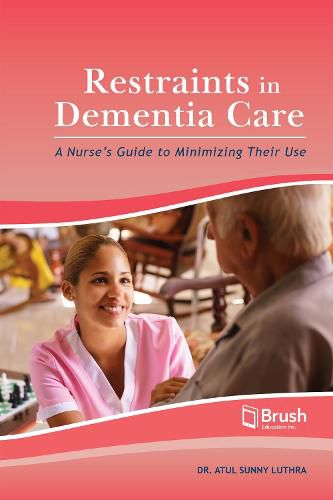Readings Newsletter
Become a Readings Member to make your shopping experience even easier.
Sign in or sign up for free!
You’re not far away from qualifying for FREE standard shipping within Australia
You’ve qualified for FREE standard shipping within Australia
The cart is loading…






Your best tool to optimize patient care by minimizing restraint use
Frontline nurses face fraught decisions every day about whether and how to use restraints in dementia care. They need to consider many complicated issues: legislation governing the use of restraints, the policies of health-care facilities, the expectations of families, and–most importantly–the well-being, dignity, and safety of patients and care providers.
Frontline nurses need the right support to navigate decisions about restraint use.
Dr. Atul Sunny Luthra and his colleagues have developed an algorithm to provide that support. Their work comes from focus-group consultations with frontline staff, a review of current literature on restraint use, and a clear summary of key legislation. The algorithm’s systematic approach ensures restraints are a last-resort measure, and puts the right steps in place when restraints are necessary.
This short guide includes:
A review of nurses’ perspectives on restraint use. Alternatives to restraints in patient management and assessment of clinical indicators for restraint use. Procedures to ensure informed consent when restraints are necessary. A reference on appropriate and inappropriate restraint use in everyday clinical situations.
$9.00 standard shipping within Australia
FREE standard shipping within Australia for orders over $100.00
Express & International shipping calculated at checkout
Your best tool to optimize patient care by minimizing restraint use
Frontline nurses face fraught decisions every day about whether and how to use restraints in dementia care. They need to consider many complicated issues: legislation governing the use of restraints, the policies of health-care facilities, the expectations of families, and–most importantly–the well-being, dignity, and safety of patients and care providers.
Frontline nurses need the right support to navigate decisions about restraint use.
Dr. Atul Sunny Luthra and his colleagues have developed an algorithm to provide that support. Their work comes from focus-group consultations with frontline staff, a review of current literature on restraint use, and a clear summary of key legislation. The algorithm’s systematic approach ensures restraints are a last-resort measure, and puts the right steps in place when restraints are necessary.
This short guide includes:
A review of nurses’ perspectives on restraint use. Alternatives to restraints in patient management and assessment of clinical indicators for restraint use. Procedures to ensure informed consent when restraints are necessary. A reference on appropriate and inappropriate restraint use in everyday clinical situations.